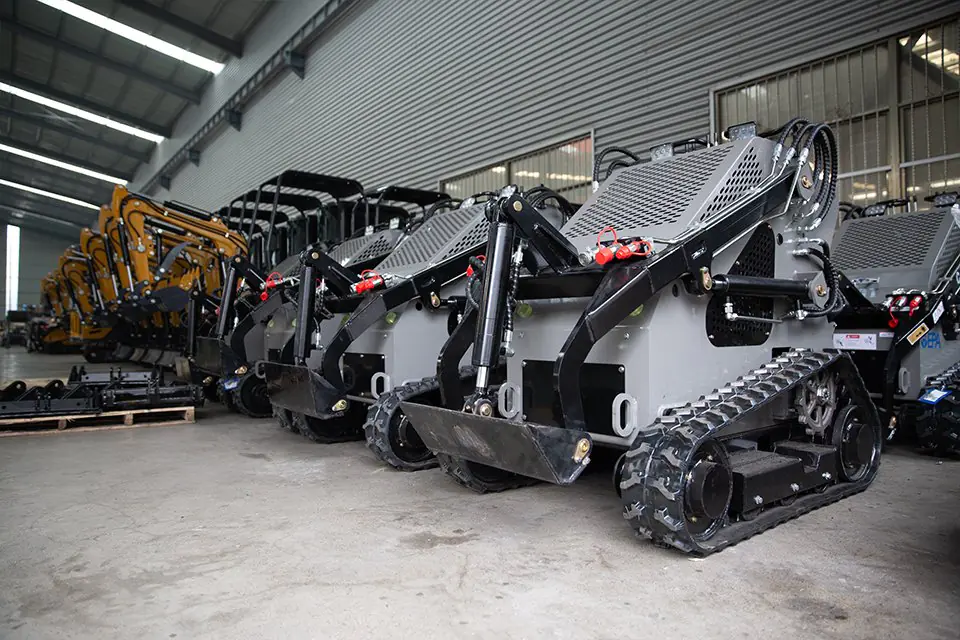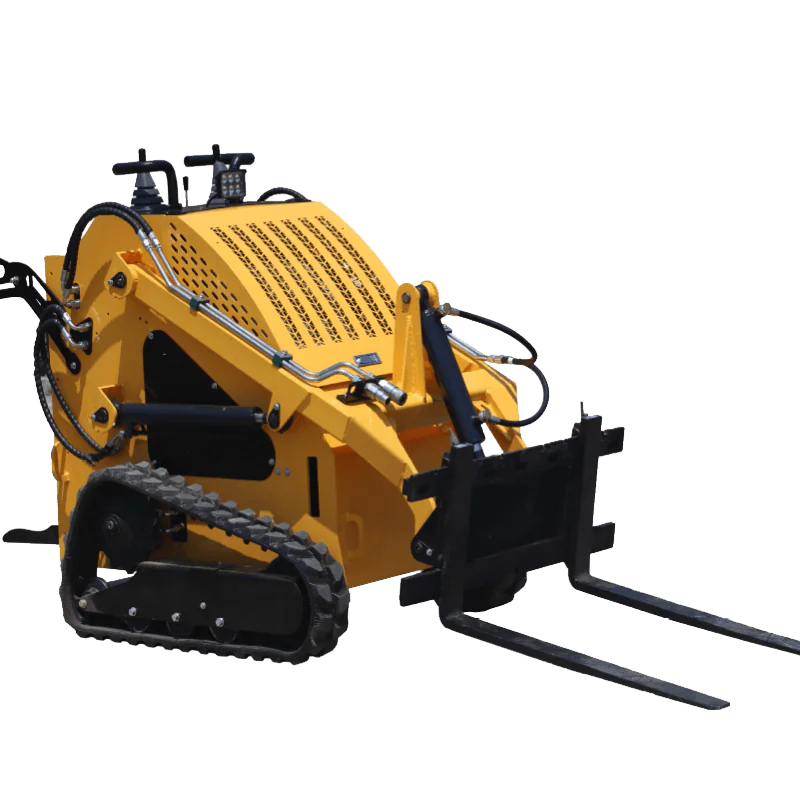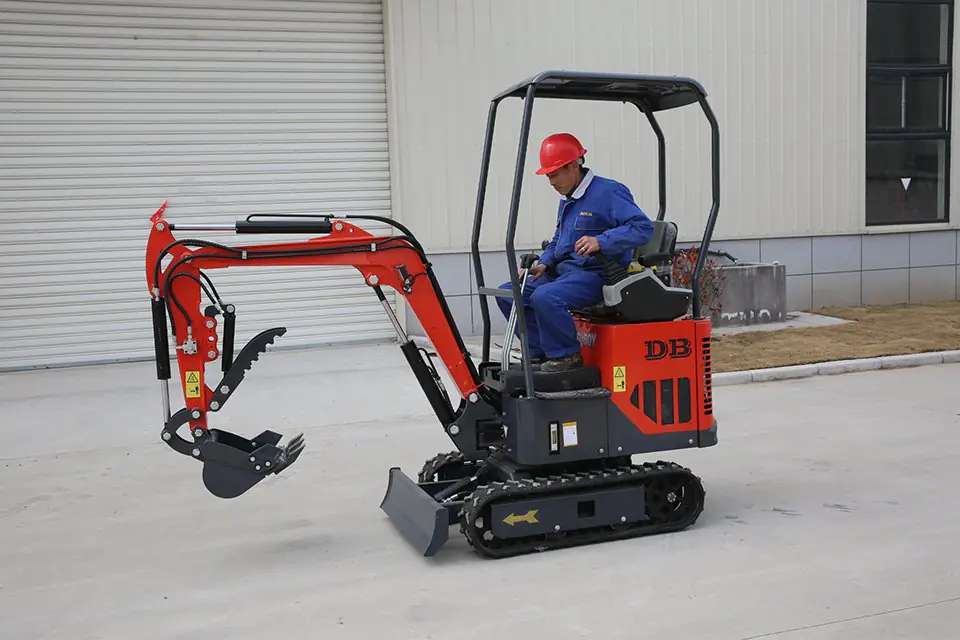Operating a skid steer can be a game-changer for your construction or landscaping projects. This compact piece of heavy equipment is incredibly versatile, handling tasks from digging and grading to lifting and loading with ease. Whether you’re new to skid steers or looking to refine your skills, this step-by-step guide will teach you how to operate a skid steer safely and efficiently. Read on to learn how to make the most of this powerful machine.

What Is a Skid Steer and How Does It Work?
A skid steer is a small, rigid-framed machine with lift arms used to attach a wide variety of labor-saving tools or attachments. It’s called a skid steer because of its ability to turn by skidding its wheels or tracks left or right. This feature allows it to maneuver in tight spaces where other equipment can’t operate.
Skid steers are equipped with either wheels or tracks, and they can handle a multitude of attachments, making them invaluable on any job site. From buckets and pallet forks to hydraulic hammers and backhoes, the skid steer loader is a true workhorse in the world of construction equipment.
Safety Considerations Before Operating a Skid Steer
Safety measures are paramount when operating any piece of heavy equipment, and skid steers are no exception. Before you begin:
- Read the Operator’s Manual: Familiarize yourself with the machine’s controls, safety features, and operating procedures.
- Inspect the Machine: Check for any visible damage, leaks in hydraulic hoses, and proper tire or track condition.
- Use Personal Protective Equipment (PPE): Wear a hard hat, safety glasses, gloves, and steel-toe boots.
- Check the Cab: Ensure the safety bar and parking brake are functioning correctly.
- Three Points of Contact: When entering or exiting the cab, maintain three points of contact to prevent falls.
Remember, understanding and respecting the machine’s power is crucial for safe operation.
Getting Familiar with the Skid Steer Loader Controls
Modern skid steers often use joystick controls for intuitive operation. Here’s what you’ll typically find:
- Left Joystick:
- Controls the machine’s movement.
- Pushing forward moves the skid steer forward.
- Pulling back moves it backward.
- Moving left or right skids the machine left or right.
- Right Joystick:
- Controls the boom and bucket (or other attachments).
- Pushing forward raises the boom.
- Pulling back lowers the boom.
- Moving left tilts the bucket back.
- Moving right tilts the bucket forward.
Some older models use foot pedals or levers instead of joysticks. Familiarize yourself with your specific skid steer to understand how to control its hydraulic functions effectively.

Starting and Preparing the Skid Steer
Before you can operate the skid steer, follow these step-by-step instructions:
- Enter the Cab Safely: Use the machine’s steps and handholds, maintaining three points of contact.
- Fasten Your Seatbelt: Secure yourself to prevent injury from unexpected movements.
- Lower the Safety Bar: This engages the machine’s controls.
- Start the Engine: Insert the key into the ignition and turn it to start.
- Release the Parking Brake: Locate the parking brake lever or button, usually in the cab’s top right corner.
- Check Indicator Lights: Ensure all systems are operational before moving.
Choosing the Right Attachment
Skid steers can accept various attachments, transforming them into multi-purpose machines. The right attachment can make your job easier and more efficient.
- Buckets: Ideal for digging, scooping, and moving materials.
- Pallet Forks: Useful for lifting and transporting palletized goods.
- Backhoes: Perfect for digging trenches and holes.
- Augers: Great for drilling post holes.
When choosing the right attachment, consider the task and the rated operating capacity (ROC) of your skid steer to ensure safe operation.
How to Operate a Skid Steer with a Bucket
Using a bucket is one of the most common applications for a skid steer. Here’s how to use it effectively:
- Approach the Material: Drive the skid steer towards the material pile.
- Lower the Boom and Open the Bucket: Use the right joystick to lower the boom and tilt the bucket forward.
- Scoop the Material: As you move forward, lift the boom slightly and tilt the bucket back to scoop.
- Transport the Material: Lift the boom to a safe height and move to the dump location.
- Dump the Material: Tilt the bucket forward to release the contents.
Learning How to Operate the Skid Steer Loader Safely
Operating the skid steer safely involves more than just knowing the controls. Consider the following:
- Monitor Your Surroundings: Always be aware of people, obstacles, and uneven terrain.
- Use Proper Techniques: Avoid sudden movements that could cause instability.
- Maintain Visibility: Keep the attachment low when moving to see ahead clearly.
- Understand the Center of Gravity: Loads should be carried low to maintain stability.

Maneuvering the Skid Steer: Left or Right Turns
The skid steer’s unique steering allows for tight turns:
- Turning Left:
- Move the left joystick left; the left wheels slow down while the right wheels speed up.
- Turning Right:
- Move the left joystick right; the right wheels slow down while the left wheels speed up.
- Skid Steering: This method causes the wheels to skid across the surface, enabling sharp turns.
Practice maneuvering in an open area to get comfortable with the machine’s responsiveness.
Grading and Leveling with a Skid Steer
Grading is a common task for skid steers, especially in landscaping:
- Attach a Grading Bucket: Wider buckets are ideal for grading tasks.
- Set the Machine to Level: Use the skid steer’s controls to position the bucket flat against the ground.
- Adjust Boom and Bucket: Use the boom and bucket controls to maintain a consistent grade.
- Move Forward Slowly: Drive steadily to avoid creating dips or rises.
Skid Steer vs. Other Equipment: Why Choose a Skid Steer?
When comparing the skid steer vs. other construction equipment, consider the following:
- Versatility: Skid steers can handle various tasks with different attachments.
- Compact Size: Ideal for job sites with limited space.
- Maneuverability: Zero-turn capabilities allow for precise movements.
However, for larger-scale projects, other machines like excavators or wheel loaders might be more suitable.
Understanding Hydraulic Systems in Skid Steers
The hydraulics in a skid steer power the lift arms and attachments:
- Primary Hydraulic System: Operates the lift arms and standard attachments.
- Auxiliary Hydraulics: Powers attachments like augers and grapples.
- High-Flow Hydraulics: For attachments that require more power, such as mulchers.
Regular maintenance of the hydraulic system is essential for optimal performance.

Maintenance Tasks for Your Skid Steer
Proper maintenance extends the life of your skid steer:
- Daily Inspections: Check fluid levels, hydraulic hoses, and for any leaks.
- Clean the Machine: Remove debris from the cab and attachment areas.
- Follow Service Intervals: Adhere to the manufacturer’s recommendations.
- Use Quality Fuel and Fluids: Ensures the machine runs efficiently.
Safety Features and Considerations
Modern skid steers come equipped with various safety features:
- Safety Bar: Prevents unintended control engagement.
- Seat Belt and Seat Sensor: Ensure the operator is seated properly.
- ROPS and FOPS: Roll-over and falling object protection structures.
Always prioritize safety and never bypass these features.
Renting vs. Buying a Skid Steer
Deciding between equipment rental and purchasing:
- Renting:
- Ideal for short-term projects.
- Access to newer models with the latest features.
- No maintenance responsibilities.
- Buying:
- Long-term investment.
- Availability whenever needed.
- Ability to customize and invest in specific attachments.
Consider your project needs and frequency of use.
Common Skid Steer Attachments and Their Uses
Enhance your skid steer’s capabilities with these attachments:
- Augers: Dig holes for posts or trees.
- Trenchers: Cut trenches for utilities.
- Grapples: Move logs, rocks, or demolition debris.
- Sweepers: Clean job sites or parking lots.
Using the right attachments maximizes efficiency and productivity.

Tips for New Operators
For those learning how to operate a skid steer:
- Start Slow: Practice in an open area.
- Understand the Controls: Spend time getting comfortable with joystick movements.
- Ask for Guidance: Work with an experienced operator or take a training course.
- Stay Alert: Always be aware of your surroundings.
Conclusion
Operating a skid steer is a valuable skill in the construction and landscaping industries. By understanding the machine’s controls, safety features, and capabilities, you can tackle a variety of tasks efficiently. Remember to prioritize safety, maintain your equipment, and continuously practice to improve your proficiency.
Key Takeaways
- Safety First: Always follow safety protocols and wear appropriate PPE.
- Understand Your Machine: Familiarize yourself with the skid steer’s controls and attachments.
- Choose the Right Attachment: Use attachments that suit your specific job requirements.
- Regular Maintenance: Keep your skid steer in top condition with routine checks.
- Continuous Learning: Operating a skid steer effectively takes practice and ongoing education.
For more information on versatile machinery, check out our Mini Skid Steer Loader options. Interested in compact excavators? Learn about our 1.3 Ton/3000 Lb Mini Excavator. If landscaping is your focus, our Remote Control Lawn Mower might be just what you need.

By mastering the skid steer, you’re adding a valuable skill to your toolkit, making you an asset on any job site.










